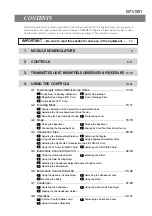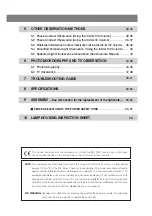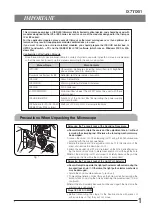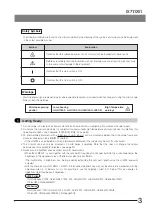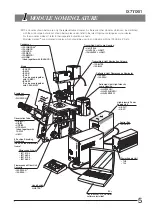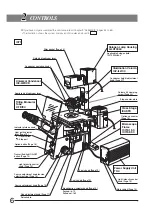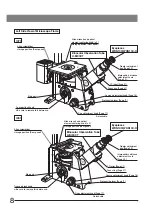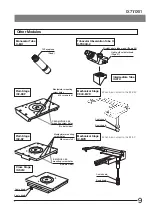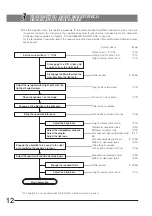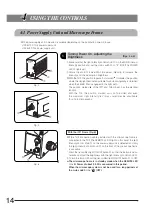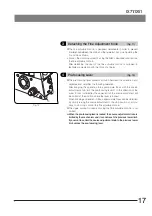
2
Fig. 2
1. After the equipment has been used in an observation of a specimen that
is accompanied with a potential of infection, clean the parts coming in
contact with the specimen to prevent infection.
· Moving this product is accompanied with the risk of dropping the speci-
men. Be sure to remove the specimen before moving this product.
· In case the specimen is damaged by erroneous operation, promptly
take the infection prevention measures.
2. The microscope is provided with a simplified waterproof mechanism.
Therefore, if culture liquid or water is spilt on the stage, revolving nosepiece
or microscope frame, damage to the equipment or an electrical shock may
result. Immediately wipe the liquid or water off if it is spilt on them.
3. When moving the microscope, remove the observation tube, condenser
and reflected light mercury lamp housing, then carefully carry the micro-
scope frame by the base (front edge) @ and the grasping part on the
illumination column ² as shown in Fig. 2. (Weight: approx. 20 kg)
Also be sure to remove the specimen since it may fall.
When moving the microscope for a long distance, it is also recommended
to disconnect all cables from the equipment.
When transporting it, also engage the transport lock mechanisms and
package it sufficiently.
Also be careful against slipping of hands during carrying.
# Damage to the microscope will occur if you grasp it by other parts
including the stage, coarse/fine adjustment knobs, etc.
4. The microscope is not covered by warranty in terms of laser safety. The
user should assume liabilities for any consequence of user modification
including introduction of the use of laser beam.
5. The surfaces of the lamp housing will become extremely hot during
operation. When installing the microscope, make sure to allow ample
free space (10 cm or more) around and in particular above the lamp
housing.
6. When installing the microscope, route the power cord away from the
lamp housing. Should the power cord come in contact with the hot lamp
housing, the power cord could melt and cause electric shock.
7. To avoid potential shock hazards and burns when replacing the light
bulb, set the main switch to “ ” (OFF) then disconnect the power cord
from the wall outlet in advance. Whenever you replace the bulb during
use or right after use, allow the lamp housing ³ and bulb to cool before
touching. (Fig. 3)
SAFETY PRECAUTIONS
Designated halogen bulb
(Illumination column: IX2-ILL100)
12V100WHAL (PHILIPS 7724)
Bulb life: 2000 hours of rated operation
Designated halogen bulb
(Illumination column: IX2-ILL30)
6V30WHAL (PHILIPS 5761)
Bulb life: 100 hours of rated operation
8. Always use the power cord provided by Olympus. If no power cord is
provided, please select the proper power cord by referring to the section
“PROPER SELECTION OF THE POWER SUPPLY CORD” at the end of
this instruction manual. If the proper power cord is not used, product
safety performance cannot be warranted.
9. Always ensure that the grounding terminal of the microscope and that of
the wall outlet are properly connected. If the equipment is not grounded,
Olympus can no longer warrant the electrical safety performance of the
equipment.
@
²
Fig. 3
³
IX2-ILL100
10. Never insert metallic objects into the air vents of the microscope frame
as this could result in electrical shock, personal injury and equipment
damage.



